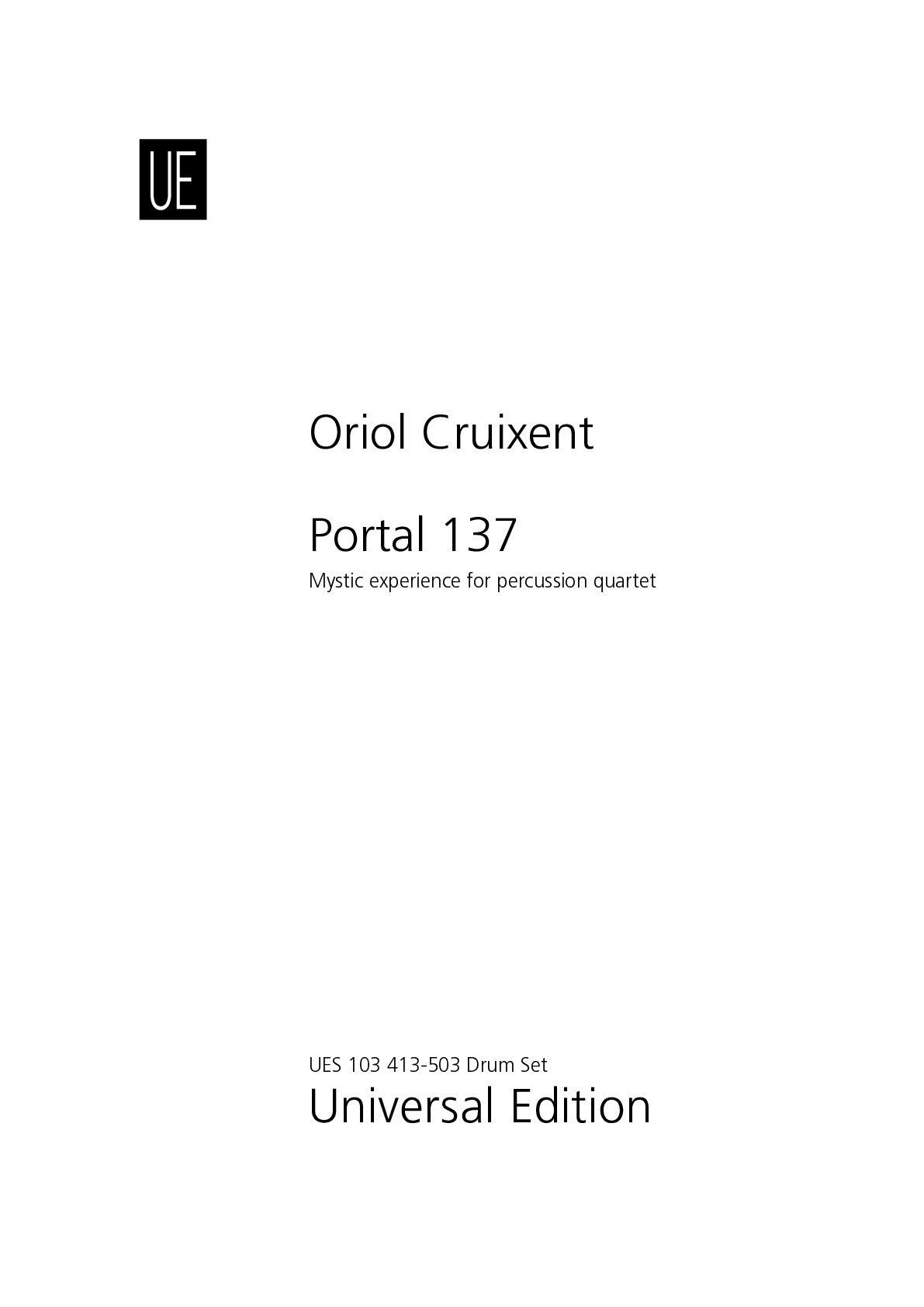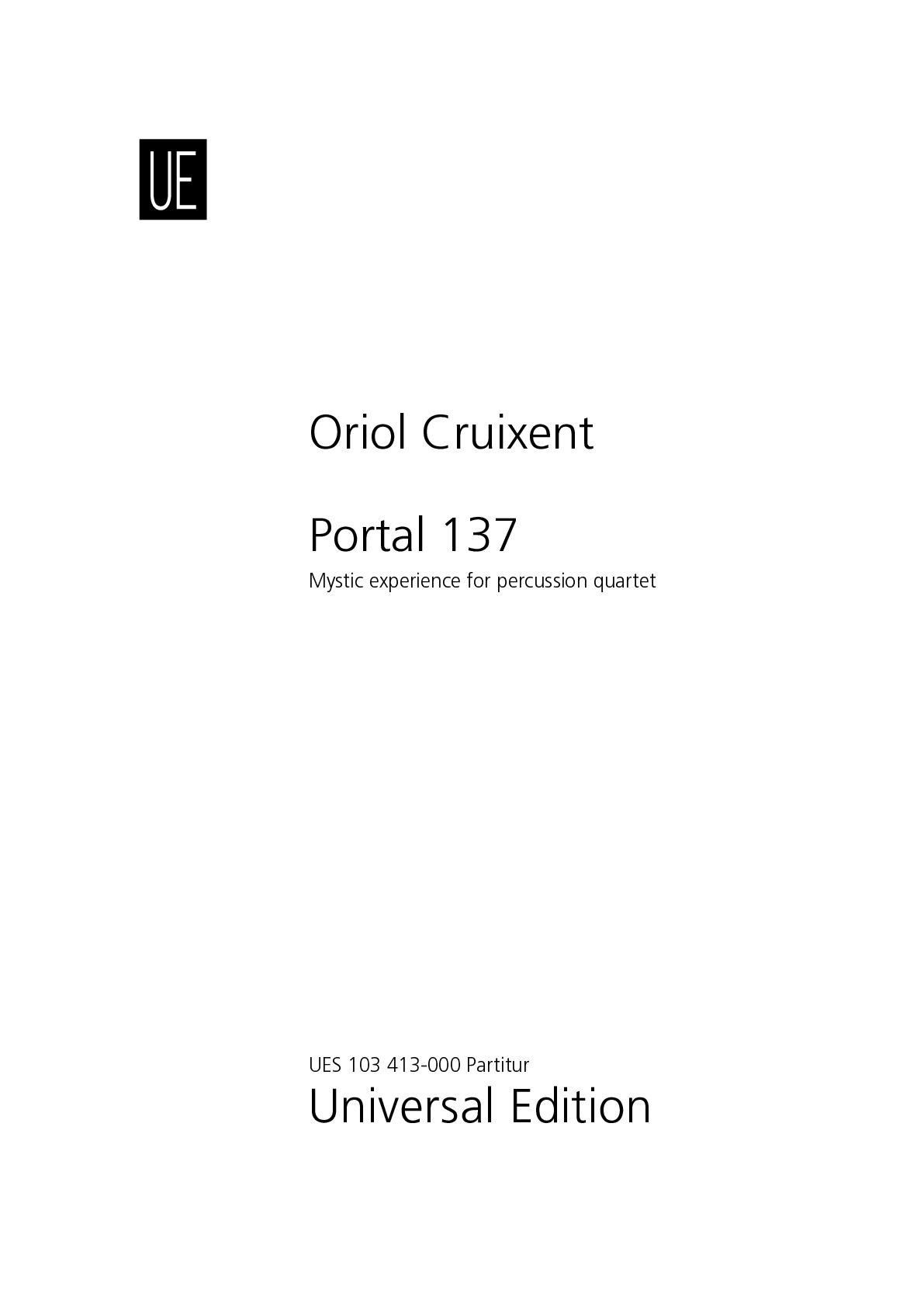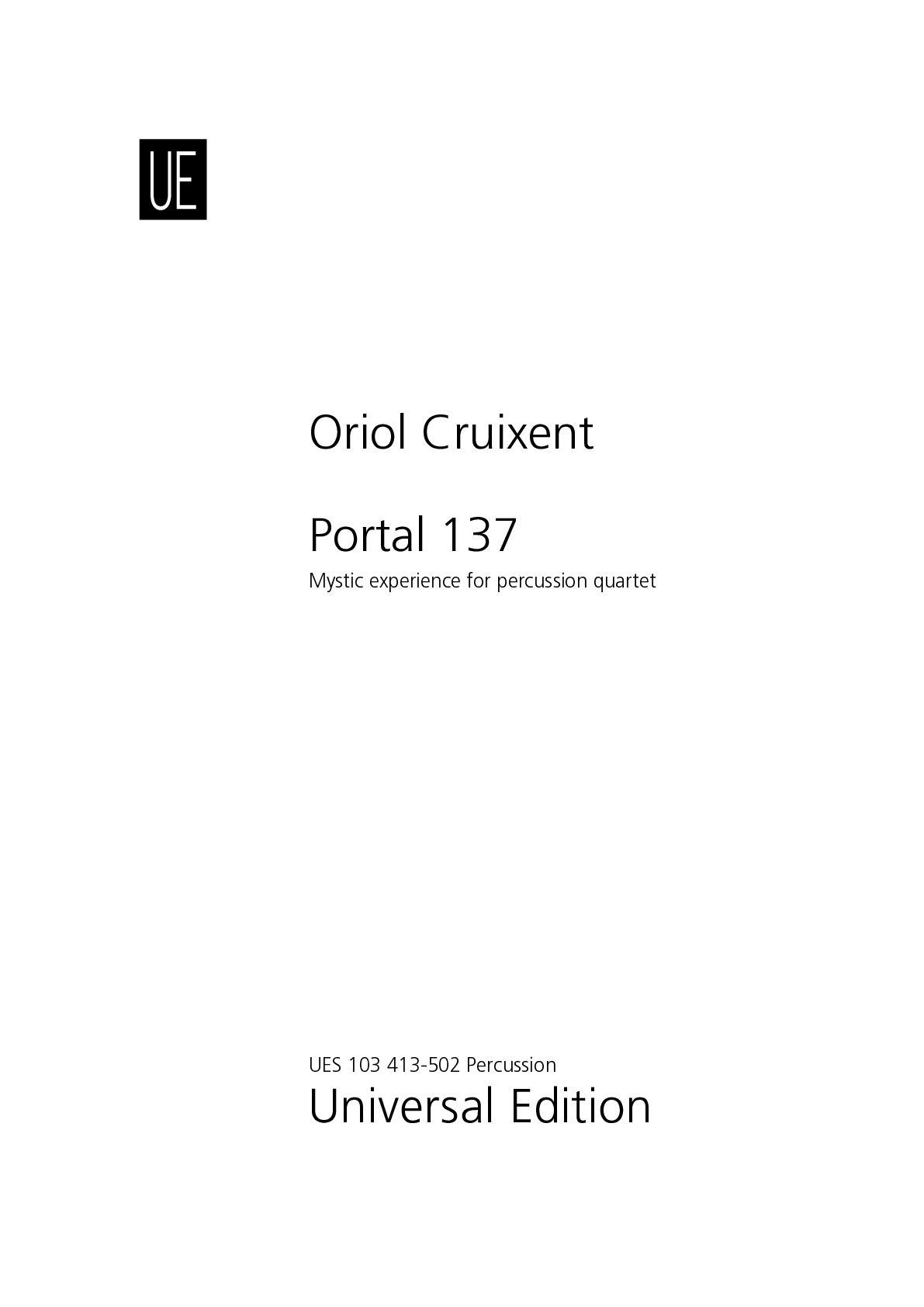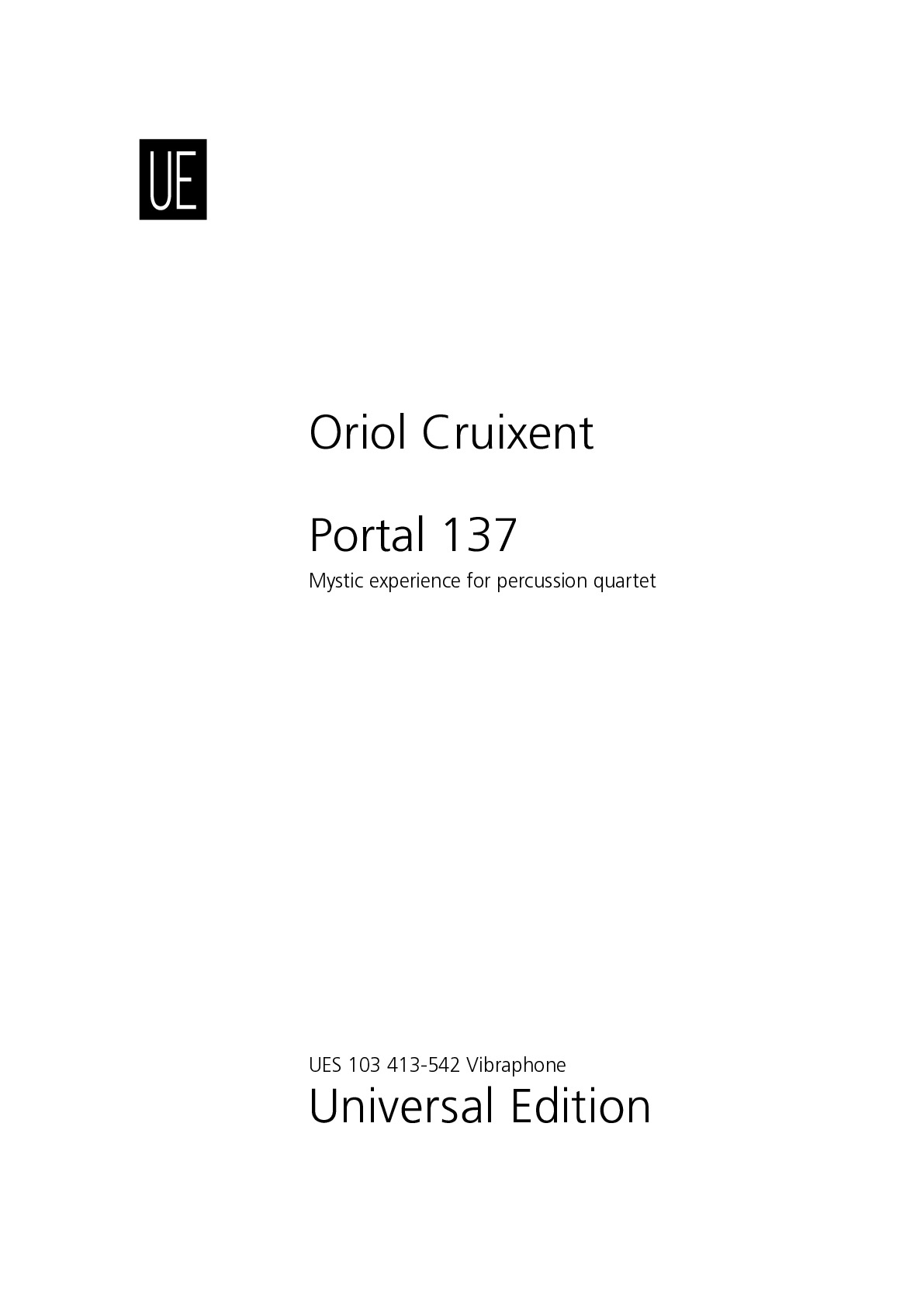
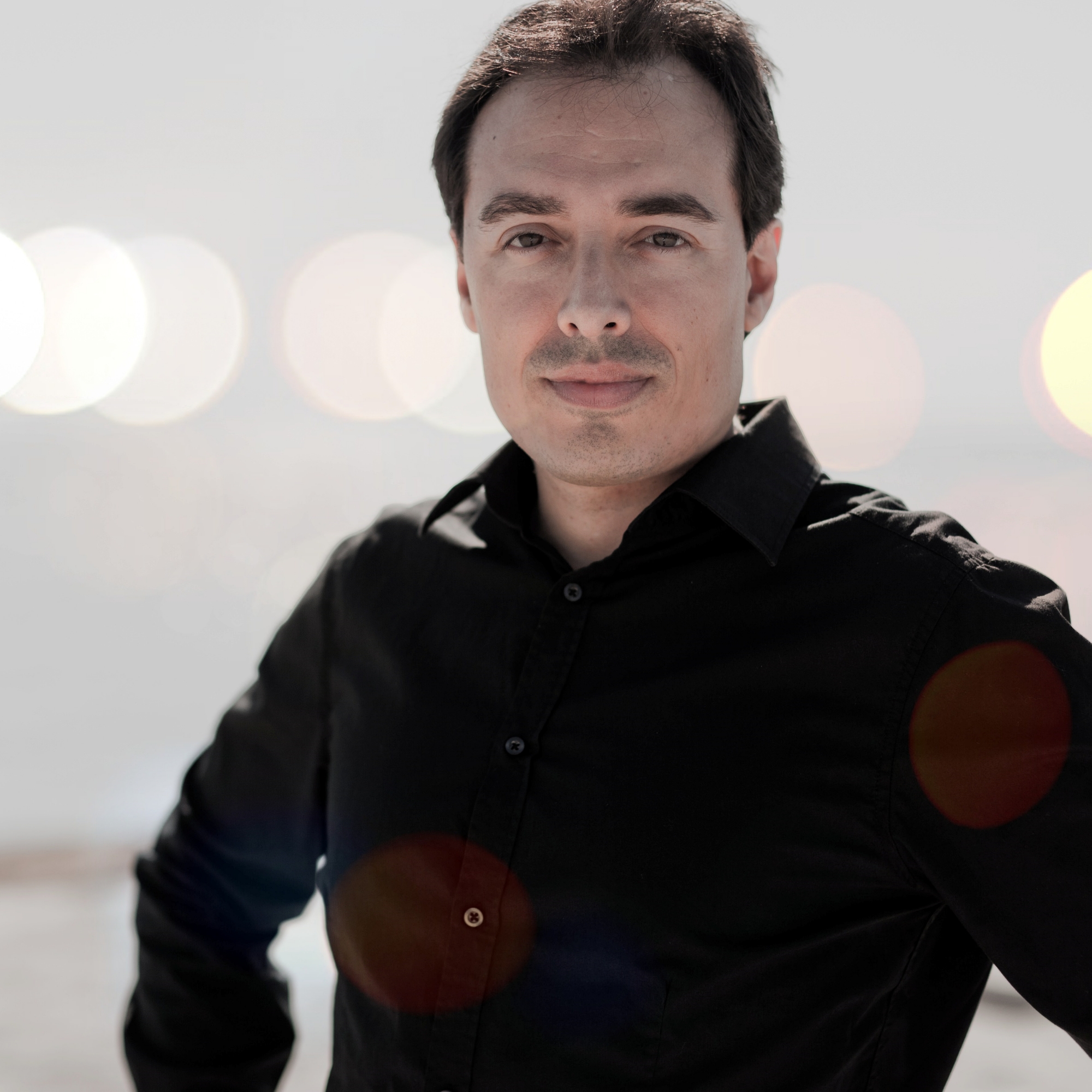
Oriol Cruixent
Portal 137
Duration: 8'
Instrumentation details:
marimba
vibraphone
percussion
drum set
Portal 137
Sample pages
Work introduction
Portal 137 is a composition for percussion quartet written by Oriol Cruixent. It is the second piece in a set of two works inspired by the theme of dimensional portals: Alpha Mysterium and Portal 137, the former acting as an overture and the latter as an epilogue. Both works form a unity where the ending of one is the beginning of the other, as a metaphor for the end of the dual state of all things: <<The chemical marriage, the union of the masculine and feminine principles is the prerequisite for becoming complete, for the individuation of the human being>> (C.G. Jung).
Portal 137 was inspired by the recognition of mystery as a universal key: <<Ever desireless, one can see the mystery. Darkness within darkness. The gate to all mystery.>> (Tao 1). Voluntary access through this metaphorical portal is meant to represent the transformation that the individual undergoes when he or she agrees to live in full awareness, anchored in the present moment.
In science, the number 137, also called Alpha, refers to the Fine-Structure Constant discovered by Arnold Sommerfeld in 1916 and later studied by physicists such as Richard Feynmann and Wolfgang Pauli. A cosmic number, a magic number, a fundamental constant almost identical to the denominator 137, a "pure number" that needs no units. According to physicists, the number 137 could hold the clues to the Grand Unified Theory: relativity, electromagnetism and quantum mechanics unified by a single number. Moreover, <<as Pauli learned from a religious scholar, the number 137 has other meanings: It is the number associated with the Kabbalah, an esoteric form of Jewish mysticism, which itself represents an extraordinary link between mysticism and physics>> (Arthur I. Miller, "137: Jung, Pauli and the Pursuit of a Scientific Obsession - Deciphering the Cosmic Number").
The work Portal 137 was written for the german percussionist Leon Lorenz and was finished in May 2022.
What is necessary to perform this work?
Vibraphone (4 mallets, motor needed)
Marimba (5 octaves, 4 mallets)
Percussion: China Cymbal (big, at least 18 inches, arco needed)
Turbo Crasher (Meinl)
Triangle in C# or G# (Overtones special effect)
Waterphone (bow needed)
Vibraslap (on a stand)
2x Cowbells
Wood Block
Tam-tam (ordinario and scratch techniques)
Glass Harp (2x wine glasses in F#)
Crotales (low G, A, Bb and B, high C, D, E, F and F#), bow needed
Kick (on a stand with smooth white Remo fell or similar, Drum&Bass sound.)
Drum-Set 2 Tom-toms, 1 Floor-tom

